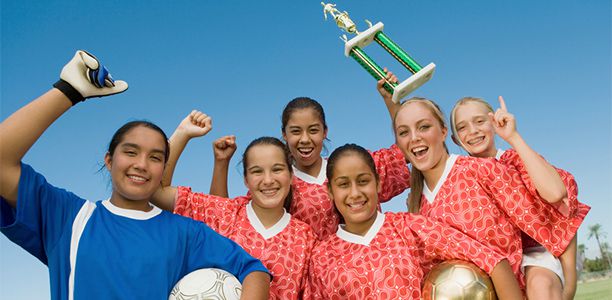Adolescent girls are missing out on opportunities to be as physically active as boys and a Melbourne researcher says that schools and sporting clubs are the place to start to change this inequity.
Dr Helen Brown from the Institute for Physical Activity and Nutrition (IPAN) at Deakin University said that specific physical activities, such as sport participation, offers a potential way to engage girls in physical activity.
“The recent establishment of an AFL National Women’s League and other exciting developments are terrific, but we also need to reach the girls who aren’t part of a professional team and may not be aware of the opportunities that exist.
“We know from our research at IPAN that 10-12 year old girls are participating in sport as much as boys, however by the time they reach 13-14 years of age, there is a massive decline in their participation levels and by 15-16 years many have completely lost interest.
“The barriers include the availability of sporting facilities, cost to join sporting clubs, but also the self-confidence for girls to get out there and participate.
“Often sporting facilities are booked up by boys for cricket and football and they just aren’t available for girls who want to play sport.
“We also know that teenage girls in particular are worried about looking foolish, so it is even more important to have places that they can go to try out new sports and just have some fun.
“We need to maintain their interest, as if they stop playing sport in their teenage years that is often the end of their interest in sport altogether and this can set up a pattern of inactivity for the rest of their lives,” she said.
Dr Brown is calling on schools and sporting clubs to make it easy for girls to find out how to sign up for a new activity or join a sporting club.
“There will always be sporty girls who are very active, but we are trying to reach the girls who are inactive and missing out on these opportunities as they just don’t know where to start to take the first step.
“We know that there are huge benefits physically, but also they get the biggest impact from the social connectedness of a team where they can help build self-esteem.
“Team sports especially provide an opportunity to develop leadership skills that we often don’t teach directly in other ways, so these girls are missing out,” she said.
Dr Brown said that research she conducted in the City of Casey with female adolescents, including those from diverse ethnic backgrounds, showed that girls have a definite preference for certain types of sport.
“The girls really loved playing volleyball and football and there was a huge number who wanted to play soccer as they had watched their brothers and men in their family play, and they felt very comfortable in that environment.
“However, they faced several barriers such as negative experiences at school, cultural perception of female participation in sport, lack of transport to venues and competing home obligations,” she said.
Dr Brown said parents are also important to help reduce the barriers faced by girls and help keep them engaged with sport.
“This is so important because if girls are participating in regular sport they are gaining a wide range of health benefit such as improved bone strength, as well as reducing their risks of developing chronic diseases later in life,” she said.
Tips for parents to encourage girls to be more physically active:
- Encourage them to try out new sports and just have a go
- Provide opportunities for them to be involved in sport and physical activity
- Ask them what sports they want to play
- It doesn’t have to be a competitive sport – it can be something fun and interactive with friends
- Encourage them to allocate an hour a day to being physically active
- Be active together – go for a swim, play tennis or enrol in a class together
- Build physical activity into your family routine such as bush walking or taking the dog for a walk
- If they don’t want to play sport, encourage them to go for a walk or a bike ride
Tips for sporting clubs and schools to encourage girls to be more physically active:
- Provide more access to sporting facilities for girls to play straight after school
- Link sport to schools more closely
- Offer greater flexibility in sport offerings
- Promote different sports available to girls such as Cardio tennis
“We need to encourage more girls to try out a range of sports and see what they enjoy as this could be the first step in them finding something that they love and will pursue throughout their teenage years and beyond,” said Dr Brown.
IPAN is a research centre with world class expertise in both nutrition and physical activity that over the past decade has made a real difference in improving the health of all Australians.
(Source: Deakin University)










